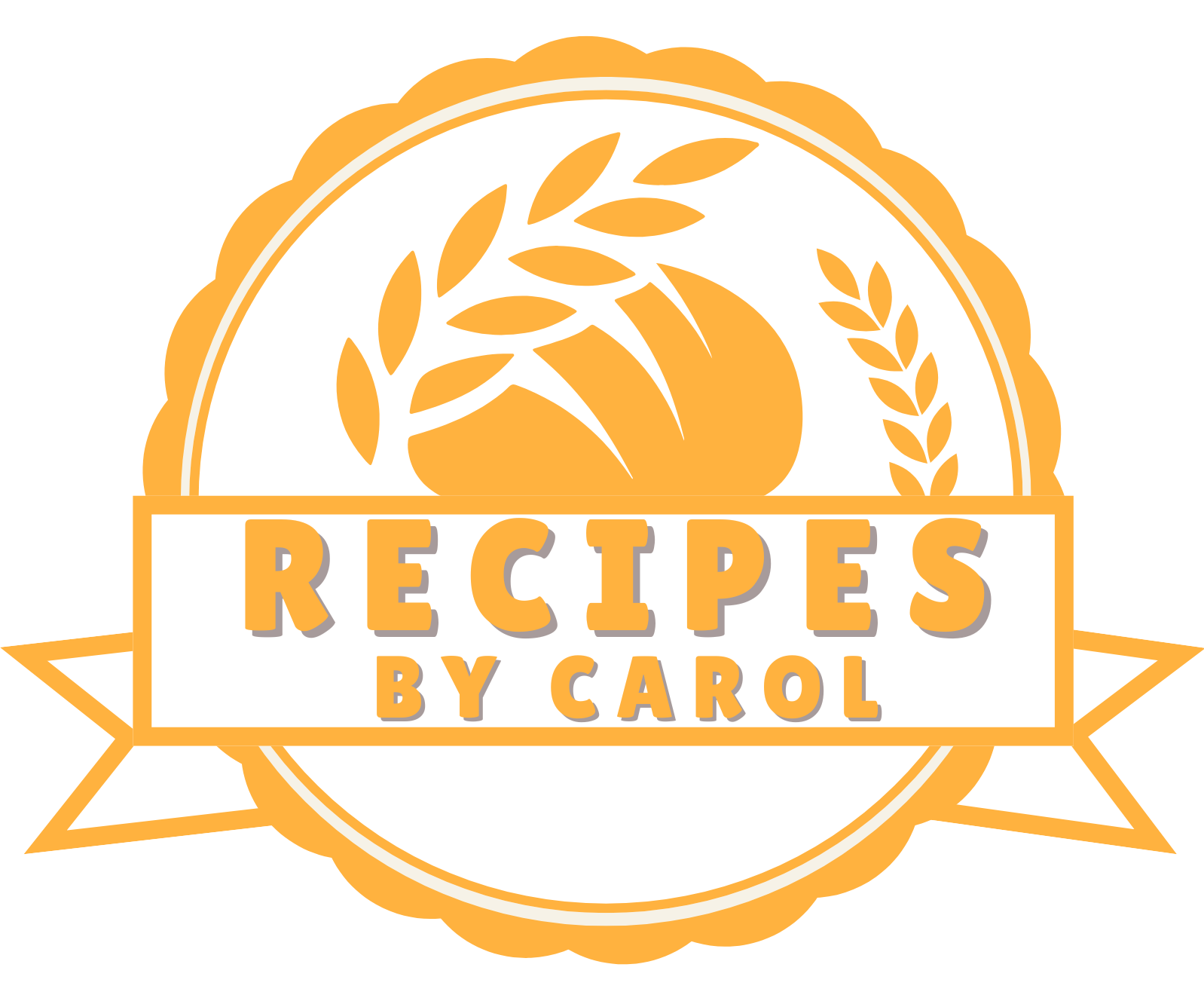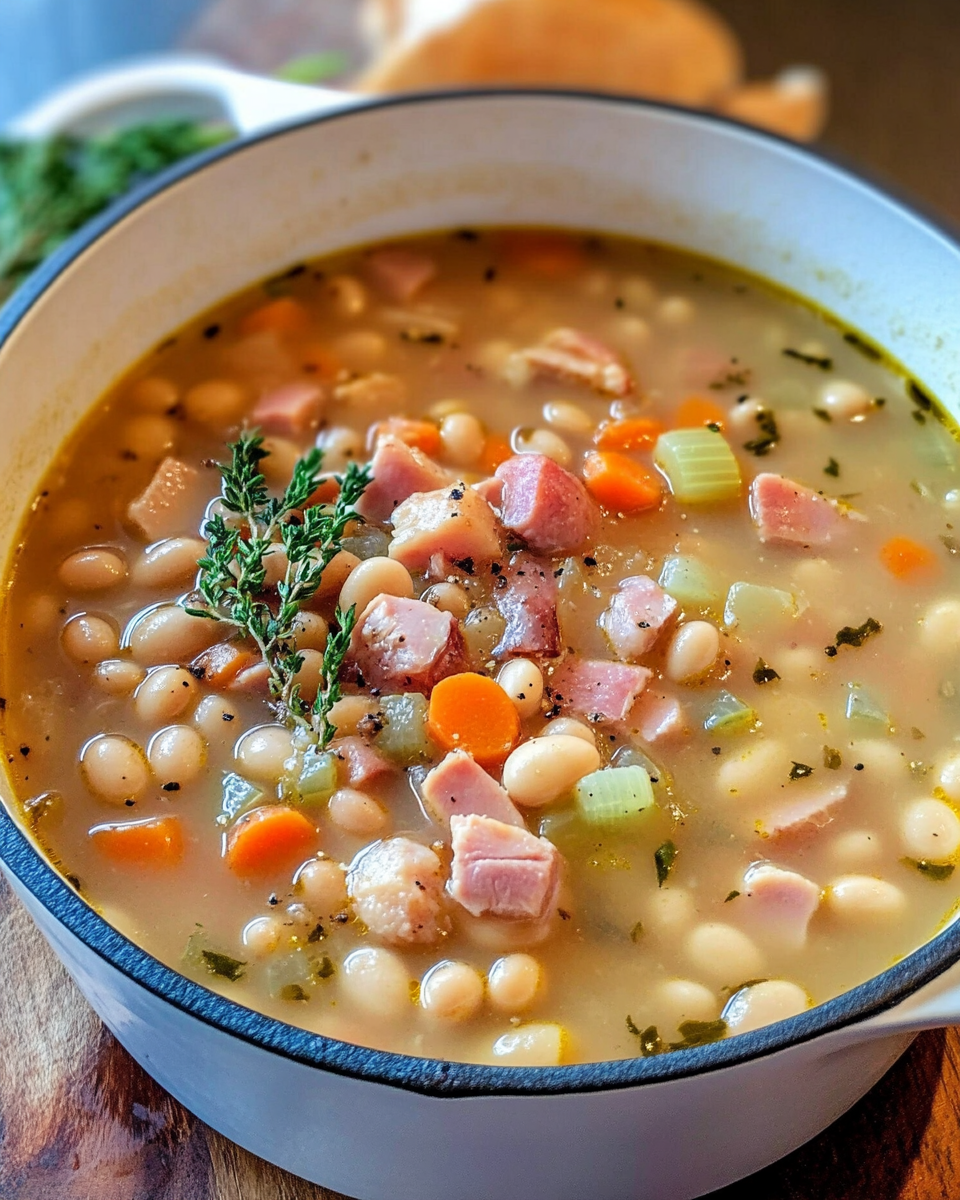The Old Fashioned Ham and Bean Soup is a throwback to traditional comfort food at its finest. This soup blends tender beans, savory ham, and aromatic vegetables into a dish that’s both nourishing and soul warming. With each simmered spoonful, you’ll taste memories of cozy kitchens and cold nights well-spent.
Perfect for using leftover ham or making the most of a meaty ham hock, this recipe is both practical and flavorful. The beans soak up all the rich essence of the broth, while the herbs and vegetables add depth and color. Whether you’re making it for your family or just for yourself, this one pot wonder is a hug in a bowl.
Full Recipe:
Ingredients:
-
1 pound dry Great Northern beans
-
8 cups water
-
1/2 teaspoon salt
-
1 ham hock
-
1 cup chopped carrots
-
1/2 stalk celery, chopped
-
1 cup chopped onion
-
1 teaspoon minced garlic
-
1 teaspoon mustard powder
-
2 bay leaves
-
2 cups chopped ham
-
1/2 teaspoon ground white pepper
Directions:
-
Rinse the beans and remove any broken or discolored ones.
-
In a large pot, bring water to a boil. Add salt, remove from heat, and soak the beans in this hot water for at least 1 hour.
-
After soaking, return the pot to high heat and add ham hock, carrots, celery, onion, garlic, mustard powder, and bay leaves.
-
Stir everything together and bring the mixture to a boil.
-
Reduce heat to low and let the soup simmer for 1 hour.
-
Remove the ham hock, stir in the chopped ham, and continue simmering for another 30 minutes.
-
Season with white pepper to taste. Serve hot and enjoy!
Prep Time: 15 minutes | Cooking Time: 1 hour 30 minutes | Total Time: 1 hour 45 minutes
Kcal: ~290 kcal per serving | Servings: 6 servings
Old-Fashioned Ham and Bean Soup: A Nostalgic Classic with Timeless Flavor
When it comes to comfort food, few dishes can rival the heartwarming appeal of Old Fashioned Ham and Bean Soup. It’s one of those iconic meals that spans generations, bringing families together around the dinner table with the promise of nourishment, flavor, and memories. This rustic, humble dish has stood the test of time and for good reason. It’s budget-friendly, deeply satisfying, and incredibly versatile, making it a favorite in households across the world.
In this article, we’ll explore the cultural roots, culinary flexibility, and cozy appeal of this traditional soup. Whether you’re cooking for a weeknight dinner or looking to repurpose leftover ham from a holiday feast, ham and bean soup is a comforting go-to you’ll come back to again and again.
The Heritage of Ham and Bean Soup
Ham and bean soup has its roots in frugality and resourcefulness. Traditionally, it was a way to make the most out of every part of a ham, especially the meaty bones or hocks left over from large family meals. In many households, wasting food was never an option and this soup is the delicious result of that philosophy.
The earliest variations date back centuries and were particularly popular in agrarian societies where legumes were inexpensive and widely available. Dried beans had the advantage of a long shelf life and were packed with protein and fiber, making them an essential pantry staple.
Across cultures, you’ll find variations of this soup. From German Erbsensuppe (pea and ham soup) to French Garbure (a cabbage and ham stew with beans), and even Brazilian Feijoada (a black bean stew with pork), the basic principle remains: combine a rich, smoky pork base with legumes and simmer slowly to extract flavor and comfort.
Why It’s Still a Staple in Modern Kitchens
Despite the evolution of culinary trends, ham and bean soup continues to earn a regular spot in home kitchens. Here’s why:
1. Budget-Friendly & Accessible
Beans are one of the most cost-effective protein sources available, and ham hocks or leftover ham from a holiday roast can stretch far. This soup is the kind of dish that feeds a crowd for a fraction of the cost of more elaborate meals.
2. Nutritionally Balanced
Great Northern beans, navy beans, or other similar legumes are rich in fiber, iron, and plant-based protein. When combined with ham, vegetables like carrots, celery, and onions, the soup becomes a nutrient-dense meal in a single bowl.
3. Comforting and Hearty
There’s something uniquely satisfying about a bowl of soup that’s been simmering for hours, filling your home with the aroma of garlic, bay leaves, and savory ham. The texture of tender beans soaked in flavorful broth is pure culinary comfort.
4. Make-Ahead and Freezer Friendly
This soup stores exceptionally well and actually improves in flavor after a day in the fridge. It also freezes beautifully, making it an ideal make-ahead meal for busy households.
Customization: One Soup, Endless Possibilities
Old-Fashioned Ham and Bean Soup is a wonderfully forgiving recipe. Whether you’re using what’s on hand or catering to dietary needs, here are a few ways to tweak and personalize the dish:
Beans Galore
While Great Northern beans are a classic choice, you can easily substitute with:
-
Cannellini beans for a creamier texture
-
Navy beans for a softer bite
-
Pinto beans for a slightly earthy, sweet flavor
-
Mixed beans for a colorful and textural medley
You can even use canned beans to save time just be sure to reduce the cooking time accordingly.
Different Meats
The traditional recipe calls for a ham hock, which infuses the broth with deep, smoky flavor. However, if you don’t have one on hand, consider:
-
Leftover holiday ham (cubed)
-
Smoked turkey legs (for a leaner option)
-
Bacon ends or pancetta (to build base flavor)
-
A vegetarian twist using liquid smoke and extra vegetables
Veggie Add-Ins
While the soup often includes staples like onion, carrot, and celery, feel free to toss in:
-
Chopped kale or spinach for added greens
-
Diced tomatoes for a slightly tangy twist
-
Potatoes or sweet potatoes for a heartier consistency
-
Zucchini, corn, or cabbage for more variety
Tips for Perfect Ham and Bean Soup
Even though it’s a simple dish, a few thoughtful techniques can elevate your ham and bean soup to something exceptional.
Hot Soak the Beans
A hot soak is quicker than the traditional overnight soak and just as effective. This process not only softens the beans but also improves digestibility and reduces cooking time.
Don’t Skip the Simmer
This soup is all about slow cooking. Simmering helps draw out the collagen from the ham bone and meld the flavors. If you’re using a slow cooker or Instant Pot, the extended cooking time replicates that old-fashioned depth.
Puree for Creaminess
Want a thicker soup without adding cream? Puree a cup of the beans and stir them back in. This adds body and richness without sacrificing texture.
Season Mindfully
Ham hocks are naturally salty, so be cautious with additional salt. Instead, enhance the flavor with herbs and spices like mustard powder, white pepper, bay leaves, or a dash of vinegar for brightness.
Serving Suggestions
Old-Fashioned Ham and Bean Soup is satisfying on its own, but the right side dishes can turn it into a well-rounded meal.
-
Cornbread or Buttermilk Biscuits: Ideal for soaking up every last drop
-
Crusty Artisan Bread: A rustic slice with a smear of butter is a perfect pairing
-
Pickles or Relish: Offer a pop of acidity to contrast the hearty soup
-
Green Salad: A crisp, fresh salad helps balance the meal’s richness
Storage and Leftovers
One of the many perks of this soup is how well it stores. In fact, it often tastes even better the next day as the flavors have had more time to meld.
Refrigerating
Store cooled soup in an airtight container in the refrigerator for up to 5–7 days. Reheat in a saucepan over medium heat or in the microwave.
Freezing
Let the soup cool completely before transferring it into freezer-safe bags or containers. It will keep for up to 3 months. For best results, thaw overnight in the refrigerator before reheating.
Batch Cooking Tip
Freeze the soup in individual portions to make lunch or weeknight dinners even more convenient.
A Soup That Warms More Than Just the Stomach
Old-Fashioned Ham and Bean Soup isn’t just a recipe it’s a culinary tradition. From the aroma that fills your kitchen to the comforting flavors that nourish both body and spirit, this dish has a way of bringing people together. It tells a story of simplicity, of stretching ingredients, and of savoring the slow, intentional art of home cooking.
In a world that often moves too fast, this soup is an invitation to slow down. It’s a one-pot reminder of how the humblest ingredients, when treated with care and patience, can produce something truly special.
So the next time you find yourself with leftover ham or just craving a cozy, hearty meal, reach for your stockpot and revisit this timeless classic. Your future self and your family will thank you.






